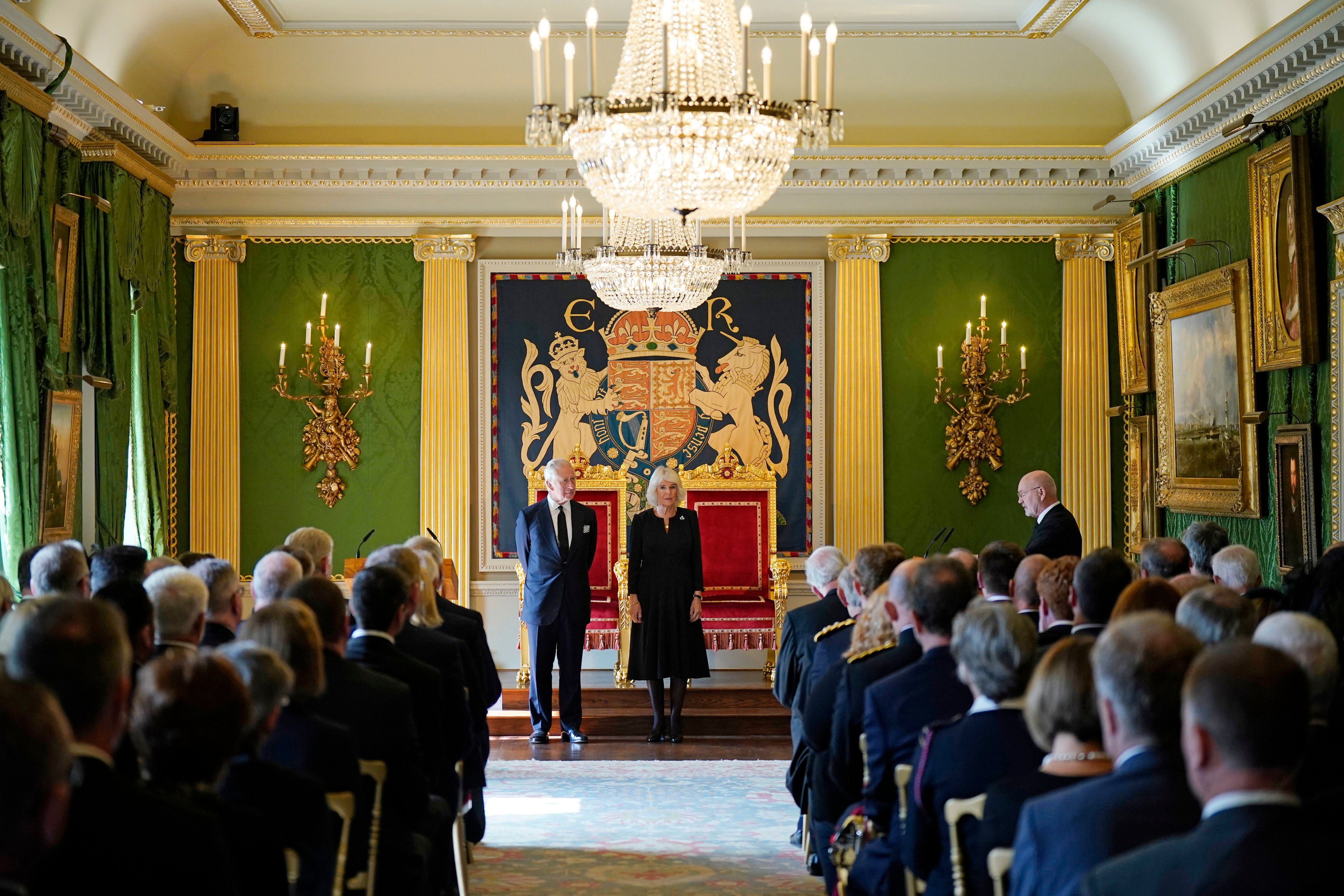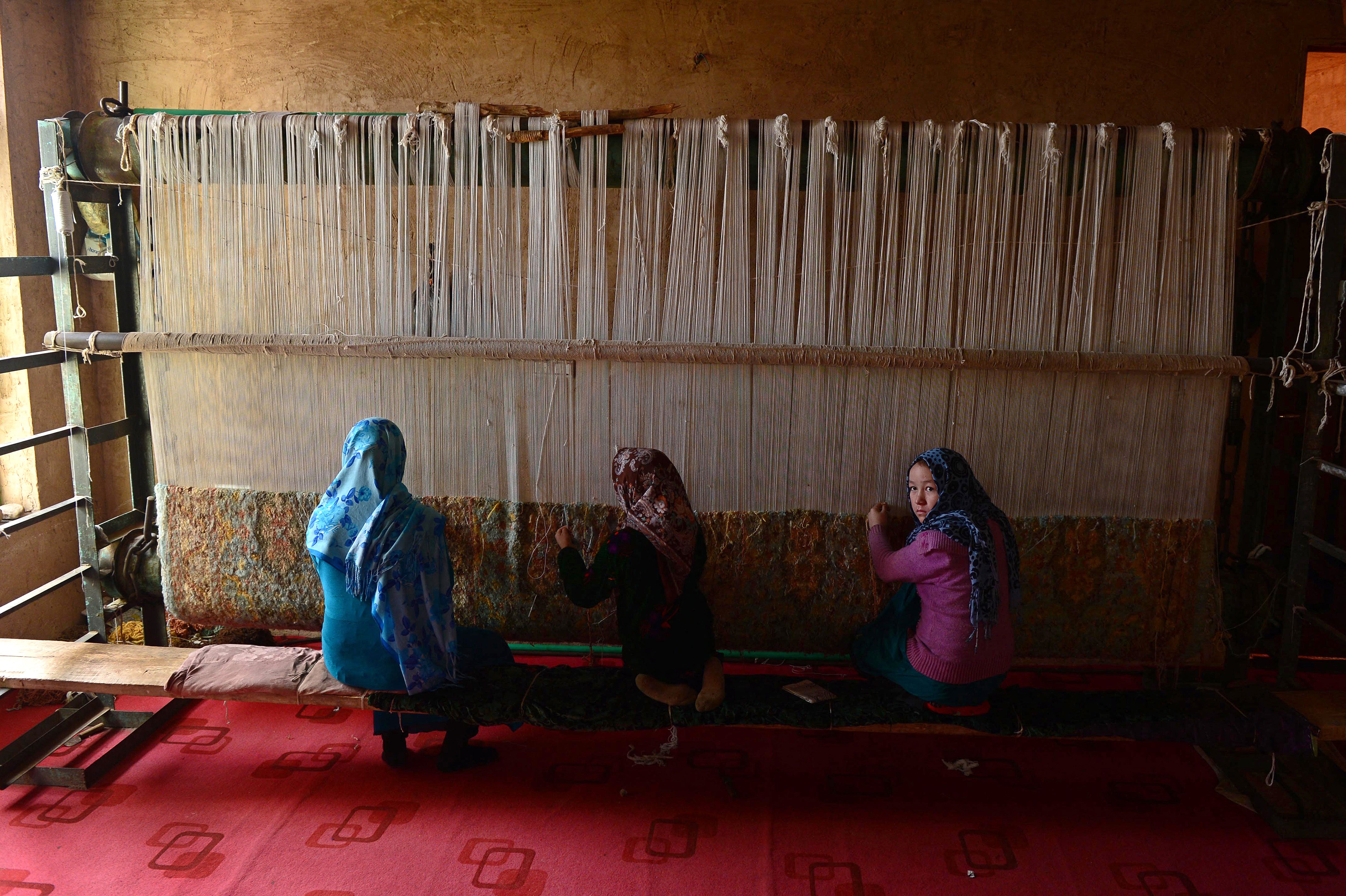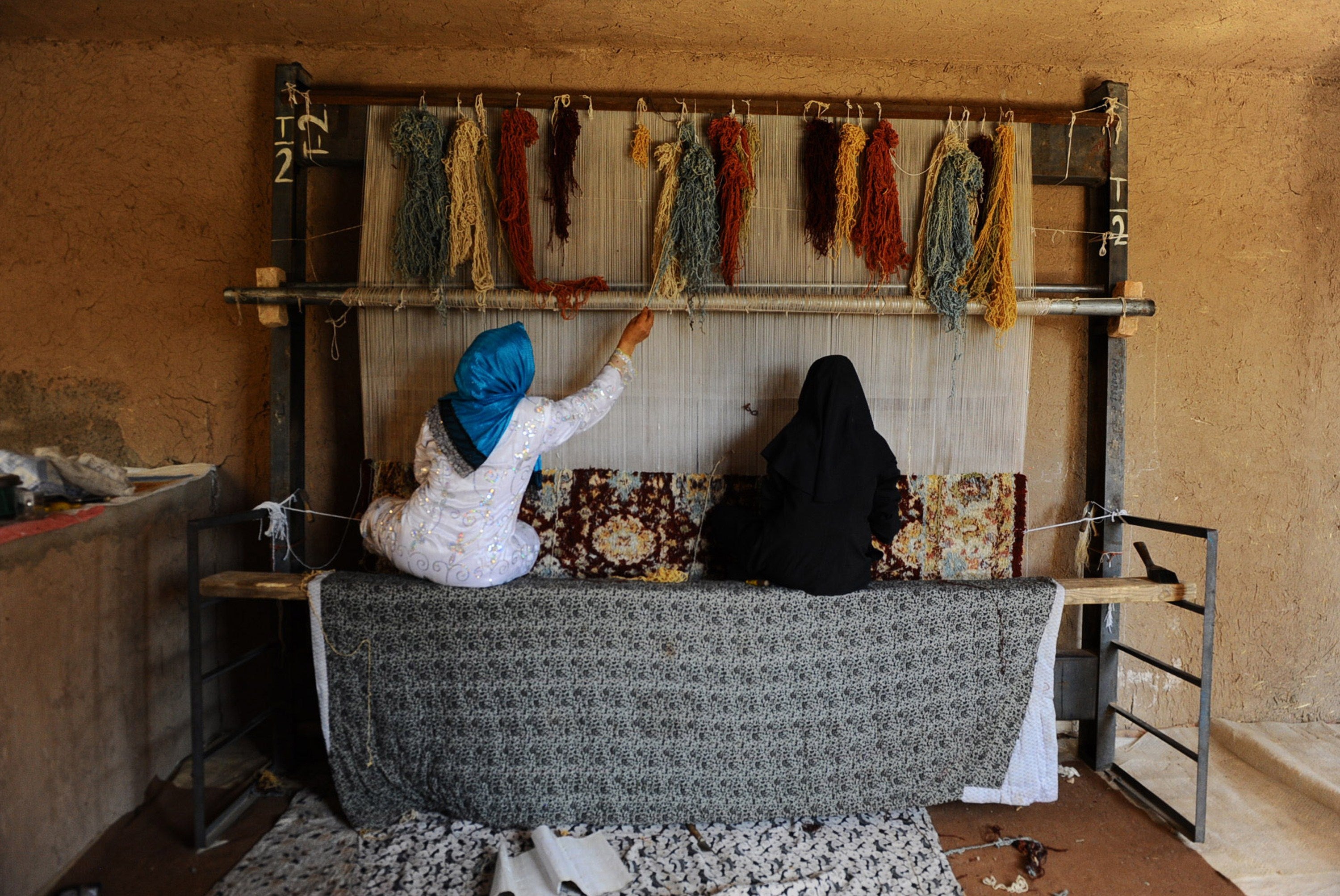How a king’s carpet is helping the women of Afghanistan
A giant carpet being made for the Throne Room at Hillsborough Castle will take 100 artists and craftspeople, designers, miniaturists, dyers, cutters, curators and weavers a year to make. It will also be a powerful statement in a country living under a brutal regime, writes Sarah Sands

-His-Majesty-King-Charles-and-Daniel-Robbins-(Seni.jpeg)
Hillsborough Castle, outside Belfast, is both a seat of government, used by the secretary of state for Northern Ireland and a cherished royal residence. Since 2021, the village has been known as Royal Hillsborough and the history of the peace process is captured in royal moments here.
It was in the cosy Lady Grey’s study, where the hard yards were put in for peace in Northern Ireland. There are portraits of the late Sinn Fein leader Martin McGuinness and of Ulster Unionist leader David Trimble, who died in 2022, and of prime minister Tony Blair and US president Bill Clinton. There is a chess board of orange and green squares, featuring protagonists of the period as players, which was given to Mo Mowlam, the former secretary of state for Northern Ireland. She gave so much to the peace process – famously once tossing off her wig in the middle of negotiations – that some of her ashes are scattered in the Hillsborough garden.
It was in the dining room that Blair looked out at the rose bushes alongside Irish Taoiseach Bertie Ahern and agreed on the 1999 Hillsborough Declaration in which both governments called for weapons to be put beyond use. It was in the Red Room that Queen Elizabeth met the Irish president Mary McAleese in 2005 for a “cordial, friendly chat”.
To preserve the rich story contained within its walls, Historic Royal Palaces, who maintain the palaces, started refurbishing Hillsborough Castle in 2014. The Throne Room was re-cast with rich dark green damask fabrics and dark red chairs of state. Behind the chairs, hangs a heraldic banner, created by needlework students at the College of Art in Belfast for the coronation of George V and reused for the coronation of Queen Elizabeth II. The paintings from the royal collection hung up in the room include Rubens, so there are more deep reds, emeralds and sapphires.
And it will be in the Throne Room where the King will soon present a new vision of weaving destinies of another country’s history. After the initial refurbishment, the Egyptian carpet on display looked a bit faded by the standards of the rest and in 2019, Aileen Peirce, head of interpretation and design at HRP, and Turquoise Mountain, a charity which protects the heritage of places in conflict, began a project close to the King’s heart.
His idea was for a gigantic Persian carpet, made in Afghanistan, overseen by Turquoise Mountain, of which he is a patron. It is hard to exaggerate the epic nature of the work, which was funded by the Drapers’, a livery company dating back to the 14th and 15th centuries. Altogether, the 15m x 6m carpet will require around 100 artists and craftspeople; designers, geometers, miniaturists, graphers, dyers, weavers, cutters and curators. It will provide the women weavers in Northern Afghanistan with employment for a year and the grand unrolling will take place in the summer of 2026.

The Hillsborough commission is to be a contemporary version of the famous Ardabil Carpet from Iran, which is on show at the Victoria and Albert Museum in South Kensington. Only Iran and Afghanistan have the heritage skills for a carpet of this size. The design concept comes from a particular manuscript page that was made in the ateliers, or workshops, around 500 years ago in Herat, western Afghanistan.
The medallion design has at its centre the royal coat of arms and a border which reflects motifs both from Afghanistan and Hillsborough. There will be emblems from the gardens: tulips, roses, pears, acorns, and Irish bees as well as pineapples from the historic pineapple house. Afghan designers have then added pomegranates and they stylised the flowers to suit the traditional shapes of Afghanistan. Silkworms are also hidden throughout the carpet for children to seek.
Dr Thalia Kennedy, the creative director of Turquoise Mountain, worked with the medievalist Aileen Pierce at Historic Royal Palaces on the faithful understanding of heritage design. Peirce, who has a doctorate in Islamic art, says: “ You have to do justice to those original crafts. These are not your Hoxton bachelor pad. I am a medievalist. My world is a riot of colour.”
The richness of the blues and reds are taken from a tabard in the Throne Room of the Ulster King of Arms and also from the paintings by Rubens. Peirce says: “You want to get it right. So many micro-decisions are taken in a room like this: tassels on curtains, what gilding... We looked at bees and thought not quite right, the silkworms at first too big, mustard colour not quite right. When you are trying to realise a world you have to get it right.”

Kennedy also says that their Afghan advisers are masters of tonal harmony: “We looked at a lot of 15th- and 16th-century Afghan Persian and Moghul rugs, our Afghan colourist advisers who have got a great eye was the last word on that. “
Skills were tested by the sheer challenge of scale. The graphing software was not initially able to cope with the size of a carpet so big that it would need its own loom and room in Afghanistan. Once they had found a computer that wouldn’t crash, they were able to print on to actual graph paper in order for the weavers to follow the exact design.
The carpet is now finally ready to go to the weavers. Kennedy says they work with weaving groups mainly in the north and in Bamyan in the central highlands who specialise in a level of knot count necessary for the realisation of the curvilinear lines. The wool comes from Ghazni sheep, which has a lustre almost a lanolin quality to it which is distinctive: “It is why carpets from Afghanistan are particularly prized,” says Kennedy. “ It has this intrinsic light quality to it, almost translucent – you look at it from various angles and it is totally different.”
The dyers mostly come from Aqcha in northern Afghanistan and after the dyers come the weavers. Between 10 and 30 seated in rows, weaving on yarns. Kennedy says: “I am in awe of the women who can sit with a bit of graph paper and make this a reality. They are not tracing it, they can read it straight into this huge carpet. Ten people sitting in a row are somehow subliminally in tune with each other. They do 3cms a day, all attuned to that same pattern and same outcome.”
For Aileen Peirce, the next great concern is the arrival of the giant carpet next summer. She is looking for a commercial freezer large enough to house it to make sure no pests alight with it. For curators, moths are the things that strike the greatest fear into their hearts.

But not everyone is a fan of this project, and others like it. There has been some cultural thuggery in recent months, with one commentator describing Turquoise Mountain as “woke colonialism” and its hand-knotted rugs as “a must-have for every virtuous home in the West’s turbo-smug boroughs”.
Shoshana Stewart, the president of Turquoise Mountain, says that the act of weaving the carpet has a wider resonance in a country where even looking out of a window and access to education has been banned. “Women can earn income while husbands and sons are out of work, an income means security, health support, a connection with the outside world.”
She adds that the work the charity does with artists in conflict zones is important because: “When everything is going wrong – the economy, security, the future disappearing – there is something really special about heritage crafts, learned from mothers, passed on to daughters, something beautiful to show off to the outside world.”
But Afghan activist Shabnam Nasimi, the CEO of Friends of Afghan Women Network (Fawn), which she co-founded with me, agrees. “Afghanistan’s heritage isn’t just about the past, it’s about survival today. Every knot in this carpet, every colour mixed by hand, is a quiet rebellion against those who would rather see our culture erased. Craftsmanship isn’t just decoration; it’s identity, history and the proof that these women are still here. This isn’t just a carpet; it’s a statement. A reminder that our culture endures – not in museums, not as relics, but as something living, breathing and impossible to silence.”
Sir Nicholas Coleridge, chair of Historic Royal Palaces, says: “It’s a remarkable carpet – people will be visiting it in 500 years time. Lucky Hillsborough is to be the recipient of this extraordinary piece.” And in Afghanistan, the women carpet weavers are making a statement to reconcile the past to a hoped for a better and brighter future.
Find out more about Friends of Afghan Women Network here



Join our commenting forum
Join thought-provoking conversations, follow other Independent readers and see their replies
Comments